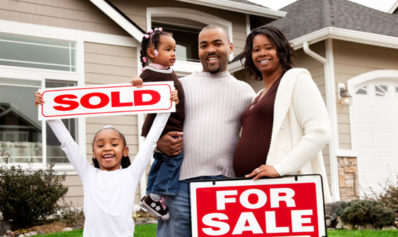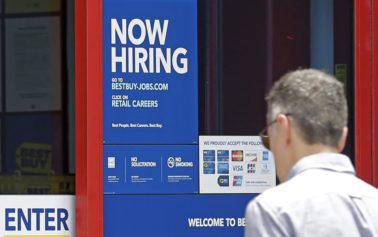photo credit: Camden Olive
While it has been documented that African-American households have a much lower median income than any other racial group, a new report by the U.S. Census Bureau contains more devastating data: the current household income of blacks is an astounding 15.8 percent less than it was before the 2007 recession.
The numbers mean that far more than any other group, blacks are hanging on by their fingernails.
Already the lowest income group in the nation, black households that saw a drop of nearly 16 percent in many cases likely means the difference between eating every day and not eating, or having a roof over their heads and living in a shelter.
Among the races, according to the census, Asian households had the highest median income at $68,636. Whites were next at $57,009. Then there was an immense drop-off to Hispanics at $39,005 and blacks at $33,321.
As for the income drop in the past six years, the numbers looked like this: blacks down 15.8 percent, Hispanics down 11.8 percent, Asians down 7.7 percent and whites down 6.3 percent.
To add to the woe, there was also a decline in the number of young people without health insurance.
And they called this a recovery?
The big numbers in the report, those that will be the most widely reported by mainstream media, are that the poverty rate and household income of Americans, for the first time since 1992, did not move from one year to the next.
“It’s a metaphor for the whole economy,” Ron Haskins, senior fellow and co-director of the Center on Children and Families at the Brookings Institution, a liberal Washington, D.C., think tank, told Al- Jazeera America. “We’re running in place. Poverty is high. Income is low. We’re not making up for lost time.”
The Census Bureau issues an annual report that tracks income, poverty and health insurance coverage. This is a particularly timely moment for the report, as the country is just weeks away from a major milestone when Americans will be able to sign up through health exchanges for coverage that officially begins in January under the Affordable Care Act, otherwise known as Obamacare.
But even at this late date, Republicans in Congress are still trying to figure out ways to defund or sabotage the president’s signature program.
The nation’s median household income in 2012 was $51,017, slightly below the 2011 level of $51,100. Household income had dropped the two previous years and is currently 8.3 percent below pre-recession levels and 9 percent lower than the all-time peak in 1999.
More than 46 million people—or 15 percent—in the United States live in poverty, according to the report, with the numbers going up for all age groups and highest among children.
The Office of Management and Budget defined poverty as an income of $23,492 for a family of four in 2012. The 2012 poverty rate was 2.5 percentage points higher than in 2007, the year before the start of the Great Recession, the most catastrophic economic conditions in this country since the Great Depression.
“No way this is good news,” Haskins said. “Even if it came down a little bit, it’s still way above where we were. We’ve lost progress.”
While the West was the only region to see a decline in poverty, dropping from 15.8 percent to 15.1 percent, the South was the only region where the number of poor people went up—jumping from 18.4 million in 2011 to 19.1 million in 2012.
“What’s striking is how little things have changed,” said Mark Mather, associate vice president of U.S. Programs at the nonpartisan Population Reference Bureau, a Washington-based research group. “Income was up slightly in cities. … Poverty increased in areas outside of metro areas.”
He said the numbers suggest urban residents are recovering faster than those in rural areas.
“We’re not making the kind of progress we should be making on poverty now that those government programs that we instituted during the recession are fading out,” Austin Nichols, economist at the left-leaning Urban Institute, told Al-Jazeera America.
While the safety net of unemployment insurance benefits was keeping 3 million people out of poverty, now that they are running out they will keep only 1.7 million people above the poverty line.
Nichols said financial conditions are improving for only the nation’s top 1 percent of earners, and child poverty has remained at 22 percent in the last three years.
“Nobody else is doing better, just holding constant, and poverty is the same even though we’re supposed to be recovering from the recession,” he said. “Something needs to be done.”
“Two-thirds of the drop (in uninsured) is occurring in children,” said Stephen Zuckerman, health economist and co-director of the Urban Institute’s Health Policy Center. “There are half a million more children with private health insurance coverage and about 300,000 more with government coverage. … I would expect to see an increase in employer coverage as the economy improves.”
As for the gender gap in wages, the report shows it may be narrowing for younger women as they become better educated, but it remains the same overall.
“Unfortunately for women and their families, it’s the same old story — another year of no improvement,” said Linda Hallman, executive director of the American Association of University Women. “Women working full time in the United States are still paid only 77 percent of what men are paid, just as they were a decade ago.”
While the median earnings for men is $49,400, it is just $37,800 for women—with the gap even wider for black and Hispanic women.
“This stagnation must end, for the good of women and the nation,” Hallman said.
Haskins predicted the gap would close in the future.
“Women are working more, men are working less,” he said. “The gap is definitely going to decline in the future.”
But overall, Haskins said, “It’s a lousy recovery, one of the worst recoveries we’ve ever had.”
Meanwhile, the New York Times added to the miserable news with a provocative story about gainfully employed New Yorkers, who in many cases hold more than one job, but who live in shelters because they can’t afford exorbitantly expensive housing.
The city’s homeless population in shelters is at a record high of 50,000, according to the Times, but more than 1 out of 4 families in shelters – 28 percent – include at least one employed adult, and 16 percent of single adults in shelters hold jobs.
“Mostly female, they are engaged in a variety of low-wage jobs as security guards, bank tellers, sales clerks, computer instructors, home health aides and office support staff members,” the Times writes. “At work they present an image of adult responsibility, while in the shelter they must obey curfews and show evidence that they are actively looking for housing and saving part of their paycheck.
“Advocates of affordable housing say that the employed homeless are proof of the widening gap between wages and rents — which rose in the city even during the latest recession — and, given the shortage of subsidized housing, of just how difficult it is to escape the shelter system, even for people with jobs.”
“I feel stuck,” Alpha Manzueta, 37, who holds two security jobs, including one at Kennedy Airport, and who has a 2 ½-year-old daughter, told the Times. “You try, you try and you try and you’re getting nowhere. I’m still in the shelter.”

